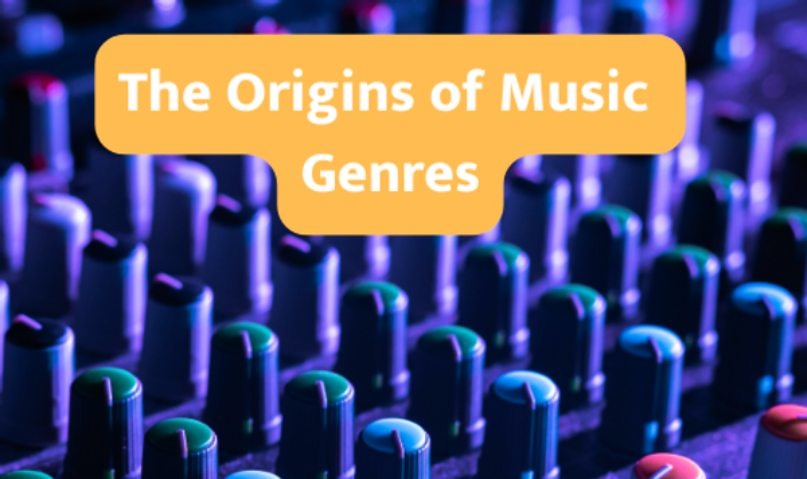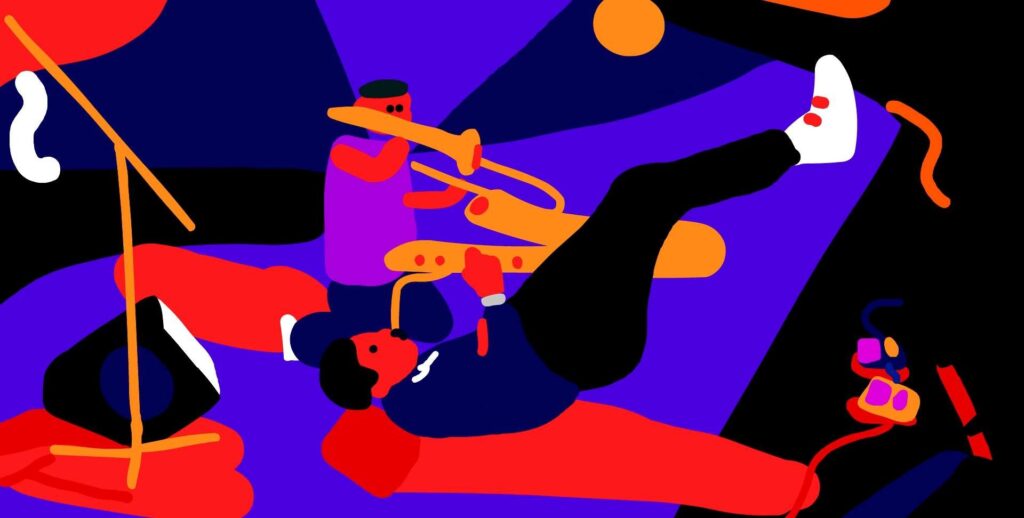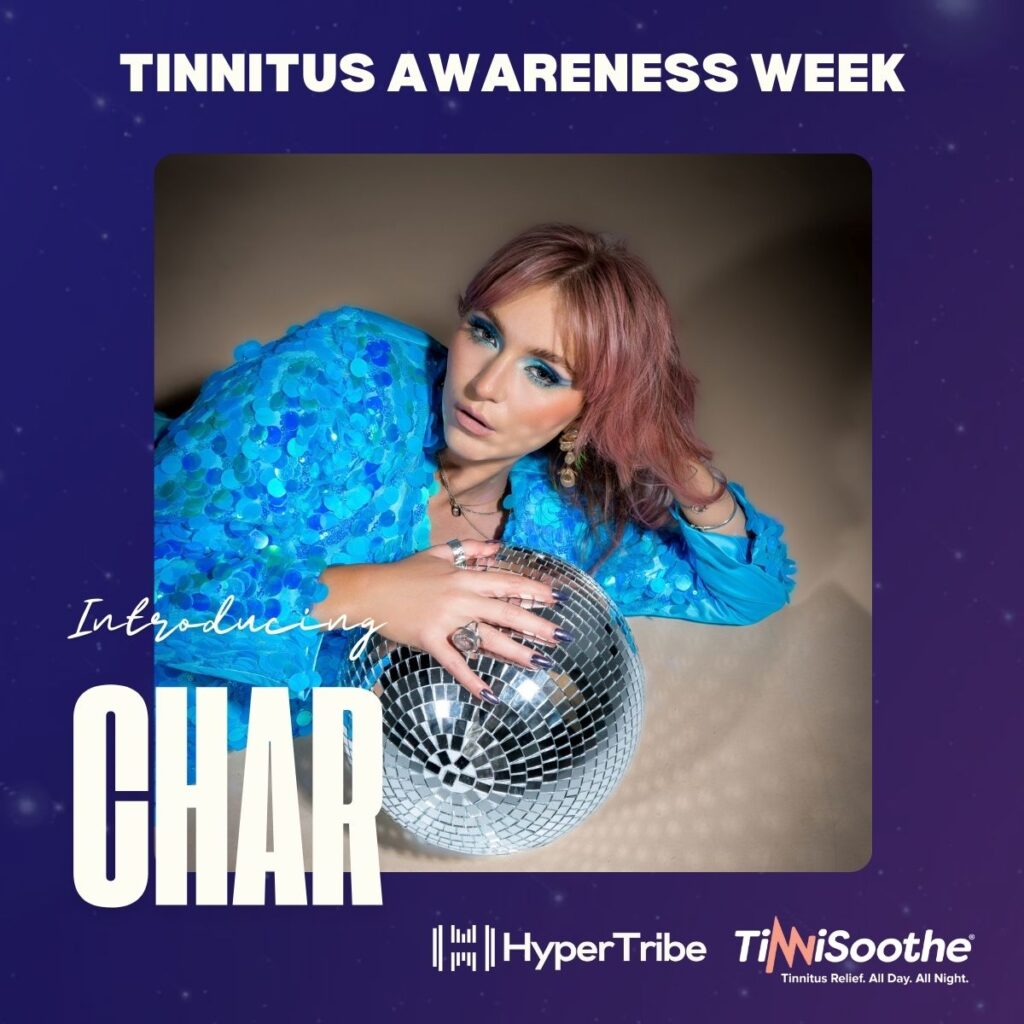Introduction
The world of music is constantly evolving, with new genres emerging that push the boundaries of creativity and sound. For music enthusiasts, discovering these emerging music genres is like uncovering hidden gems. This blog post aims to introduce you to some of the most exciting and innovative music genres that are shaping the future of music.
From the ethereal soundscapes of Shoegaze to the nostalgic beats of Vaporwave, we’ll explore how these genres originated, their cultural influences, and how technology plays a pivotal role in their development. By the end of this post, you’ll have a deeper understanding of these genres and perhaps even a few new favorite artists to add to your playlist.
The Evolution of Music Genres
Music genres have always been a reflection of the times, evolving with cultural shifts and technological advancements. Early genres like classical and jazz have given birth to modern sounds like hip-hop and EDM. The fluid nature of music allows for continuous innovation, leading to the birth of genres that defy traditional categorization.
The beauty of this evolution is that it keeps the music scene vibrant and dynamic. Artists are continually pushing the envelope, blending elements from various genres to create something entirely new. This constant state of flux ensures that there is always something fresh and exciting for listeners to explore.
Understanding the evolution of music genres also helps us appreciate the rich tapestry of sounds that exist today. It serves as a reminder that music is not static but a living, breathing entity that grows and changes with us.
The Origins of Music Genres

The roots of music genres can often be traced back to specific cultural movements or technological innovations. For example, jazz emerged from the African American communities in the early 20th century, influenced by blues and ragtime. Similarly, rock and roll drew from blues, country, and gospel music.
Understanding the origins of these genres gives us insight into the cultural and social contexts that shaped them. It also highlights the interconnectedness of different musical styles and how they influence each other over time.
By exploring the origins of music genres, we can better appreciate the diversity and richness of the musical landscape. It also helps us recognize the contributions of various communities and cultures to the world of music.
The Influence of Cultural Movements on Music Genres
Cultural movements have always played a significant role in shaping music genres. The civil rights movement of the 1960s, for example, had a profound impact on soul and R&B music, giving rise to powerful songs that spoke of struggle and hope. Similarly, the punk movement of the 1970s was a reaction against the perceived excesses of mainstream rock, leading to a raw, unpolished sound.
These cultural movements often serve as catalysts for innovation, inspiring artists to experiment with new sounds and styles. They also provide a platform for voices that might otherwise go unheard, enriching the musical landscape with diverse perspectives.
Understanding the influence of cultural movements on music genres helps us see music as more than just entertainment. It is a powerful medium for social and political expression, capable of inspiring change and fostering a sense of community.
The Role of Technology in Shaping Music Genres
The advent of technology has had a profound impact on music, enabling new forms of expression and creativity. From the invention of the electric guitar to the rise of digital audio workstations, technology has continually reshaped the way music is created and consumed.
Electronic music, for instance, owes much of its existence to advancements in synthesizers and drum machines. These tools have allowed artists to explore new sonic landscapes, leading to the birth of genres like techno, house, and dubstep.
In addition to creation, technology has also revolutionized the distribution of music. The internet and streaming platforms have made it easier than ever for artists to share their work with a global audience. This democratization of music has led to the emergence of niche genres that might not have found an audience in the pre-digital age.
Exploring Experimental Music Genres
Experimental music genres are those that push the boundaries of what is considered conventional, often incorporating unique sounds, structures, and techniques. These genres challenge the listener’s expectations and invite them to experience music in new ways.
One such genre is Avant-Garde, which often defies traditional musical norms and embraces unconventional sounds. Another is Noise, which explores the aesthetic potential of dissonance and chaos.
These experimental genres may not appeal to everyone, but they offer a glimpse into the limitless possibilities of music. They remind us that music is an art form with no fixed boundaries, capable of endless innovation and reinvention.
Avant-Garde: Pushing the Boundaries of Music

Avant-garde music is all about breaking the rules and exploring new frontiers. This genre often incorporates unconventional sounds, such as found objects or electronic noises, and may challenge traditional notions of melody and harmony.
Artists like John Cage and Karlheinz Stockhausen are pioneers of avant-garde music, using experimental techniques to create compositions that defy categorization. Their work has inspired countless others to push the boundaries of what is possible in music.
While avant-garde music may not be mainstream, it plays a crucial role in the evolution of musical expression. It encourages artists to think outside the box and explore new creative avenues, leading to fresh and innovative sounds.
Noise: Embracing Dissonance and Chaos
Noise music is another genre that challenges conventional musical norms by embracing dissonance, distortion, and chaos. This genre often uses unconventional instruments and techniques to create a raw, unfiltered sound.
Artists like Merzbow and Throbbing Gristle are known for their contributions to the noise genre, creating music that is intense, abrasive, and often confrontational. While noise music may be an acquired taste, it offers a unique listening experience that challenges the listener’s perception of sound.
Noise music reminds us that beauty can be found in unexpected places. It encourages us to appreciate the complexity and richness of sound, even when it defies traditional notions of harmony.
Glitch: Embracing Imperfections in Digital Sound
Glitch music is a genre that celebrates the imperfections and errors in digital sound. This genre often incorporates elements of electronic music, such as loops and samples, but intentionally introduces glitches and distortions to create a unique sonic texture.
Artists like Oval and Autechre are known for their contributions to the glitch genre, using digital manipulation to create intricate, fragmented compositions. Glitch music challenges our perception of sound, inviting us to find beauty in imperfections.
The rise of glitch music reflects the growing influence of technology in the creative process. It reminds us that even in a digital age, human creativity and spontaneity remain essential elements of artistic expression.
Unveiling Underground Music Genres
Underground music genres often operate outside the mainstream, offering a platform for alternative voices and sounds. These genres may not receive widespread recognition, but they have a dedicated following and contribute to the richness of the musical landscape.
One such genre is Shoegaze, characterized by its ethereal soundscapes and introspective lyrics. Another is Vaporwave, which combines nostalgia and irony to create a unique digital aesthetic.
Exploring underground music genres allows us to discover hidden gems and appreciate the diversity of musical expression. It reminds us that some of the most innovative and exciting music can be found off the beaten path.
Shoegaze: The Ethereal Blend of Dream Pop and Noise Rock

Shoegaze is a genre that emerged in the late 1980s, characterized by its dreamy soundscapes, lush textures, and introspective lyrics. The name “shoegaze” comes from the tendency of musicians to look down at their pedals while performing, creating a wall of sound with heavy use of effects.
Bands like My Bloody Valentine and Slowdive are pioneers of the shoegaze genre, blending elements of dream pop and noise rock to create a unique sonic experience. The genre often features swirling guitars, reverb-drenched vocals, and a sense of melancholy.
Shoegaze offers a captivating listening experience that transports the listener to another world. Its ethereal soundscapes and emotional depth make it a genre worth exploring for any music enthusiast.
Vaporwave: Nostalgia and Irony in Digital Music
Vaporwave is a genre that emerged in the early 2010s, characterized by its use of retro aesthetics, chopped and screwed samples, and a sense of nostalgia and irony. The genre often incorporates elements of 1980s and 1990s pop culture, creating a unique digital aesthetic.
Artists like Macintosh Plus and Saint Pepsi are known for their contributions to the vaporwave genre, using digital manipulation to create surreal, nostalgic soundscapes. Vaporwave often challenges the listener’s perception of time and memory, uniquely blending past and present.
The rise of vaporwave reflects the growing influence of the internet and digital culture on music. It offers a fascinating exploration of nostalgia and irony, making it a genre worth exploring for those interested in the intersection of music and technology.
Witch House: Dark and Haunting Electronic Music
Witch House is a genre that emerged in the late 2000s, characterized by its dark, haunting soundscapes, occult imagery, and heavy use of reverb and distortion. The genre often incorporates elements of industrial, electronic, and goth music, creating a unique and eerie atmosphere.
Artists like Salem and Crystal Castles are known for their contributions to the witch house genre, using dark, atmospheric sounds to create a sense of unease and mystery. The genre often features slow, methodical beats, ghostly vocals, and a sense of otherworldliness.
Witch House offers a unique listening experience that explores the darker side of electronic music. Its haunting soundscapes and occult themes make it a genre worth exploring for those interested in the more experimental and atmospheric side of music.
Read Also: Navigating The Journey Of Online Music Distribution
Rediscovering Forgotten Music Genres
While it’s exciting to explore emerging music genres, it’s also worth rediscovering forgotten genres that have left a lasting impact on the musical landscape. These genres may not be in the spotlight today, but they offer a rich and diverse listening experience.
One such genre is Gypsy Jazz, a lively fusion of jazz and Romani music. Another is Chamber Pop, which combines classical influences with indie pop sensibilities. And then there’s Tropicalia, a psychedelic sound that emerged from the Brazilian counterculture of the 1960s.
Rediscovering these forgotten genres allows us to appreciate the full spectrum of musical expression. It reminds us that music is a timeless art form, capable of transcending cultural and historical boundaries.
Gypsy Jazz: The Lively Fusion of Jazz and Romani Music

Gypsy Jazz is a genre that emerged in the 1930s, characterized by its lively rhythms, virtuosic guitar playing, and distinctive blend of jazz and Romani music. The genre often features fast tempos, intricate melodies, and a sense of improvisation.
Artists like Django Reinhardt and Stéphane Grappelli are pioneers of the gypsy jazz genre, using their virtuosic playing to create a unique and captivating sound. The genre often features acoustic guitars, violins, and double bass, creating a vibrant musical texture.
Gypsy jazz offers a lively and energetic listening experience that combines the best of jazz and Romani music. Its intricate melodies and virtuosic playing make it a genre worth exploring for any music enthusiast.
Chamber Pop: Classical Influences in Indie Pop
Chamber Pop is a genre that emerged in the 1990s, characterized by its use of classical instrumentation, lush arrangements, and a blend of indie pop sensibilities. The genre often features string sections, woodwinds, and brass, creating a rich and textured sound.
Artists like Belle and Sebastian and The Divine Comedy are known for their contributions to the chamber pop genre, using classical influences to create elegant and sophisticated compositions. The genre often features intricate arrangements, poetic lyrics, and a sense of nostalgia.
Chamber pop offers a refined and elegant listening experience that combines the best of classical and indie pop music. Its lush arrangements and sophisticated sound make it a genre worth exploring for those interested in the intersection of classical and contemporary music.
Tropicalia: The Psychedelic Sound of Brazilian Counterculture
Tropicalia is a genre that emerged in the late 1960s, characterized by its psychedelic sound, eclectic influences, and association with the Brazilian counterculture movement. The genre often incorporates elements of rock, samba, and bossa nova, creating a unique and vibrant musical texture.
Artists like Caetano Veloso and Gilberto Gil are pioneers of the tropicalia genre, using their innovative compositions to challenge the political and cultural status quo. The genre often features electric guitars, lush harmonies, and a sense of experimentation.
Tropicalia offers a colorful and psychedelic listening experience that captures the spirit of the Brazilian counterculture movement. Its eclectic influences and innovative sound make it a genre worth exploring for those interested in the intersection of music and social change.
FAQs
How do you explore new music genres?
You can explore new music genres by using music streaming platforms, following music recommendations, attending live performances, and joining music communities online.
How does technology influence the development of music genres?
Technology plays a crucial role in shaping music genres by enabling new forms of expression and creativity. Advancements in digital audio workstations, synthesizers, and the internet have revolutionized the way music is created and consumed.
Why should you explore different musical genres?
Exploring different musical genres can expand your musical taste, introduce you to new cultures, and enhance your overall appreciation for music.
Conclusion
Exploring emerging music genres offers a fascinating glimpse into the future of music. From the ethereal soundscapes of Shoegaze to the nostalgic beats of Vaporwave, these genres push the boundaries of creativity and sound. By understanding their origins, cultural influences, and technological advancements, we can better appreciate the diversity and richness of the musical landscape.
For those looking to deepen their connection with the world of music, consider joining HyperTribe Membership. Our community of music enthusiasts and professionals offers exclusive access to events, resources, and networking opportunities. Join us today and be part of a vibrant community that celebrates the art of music.



